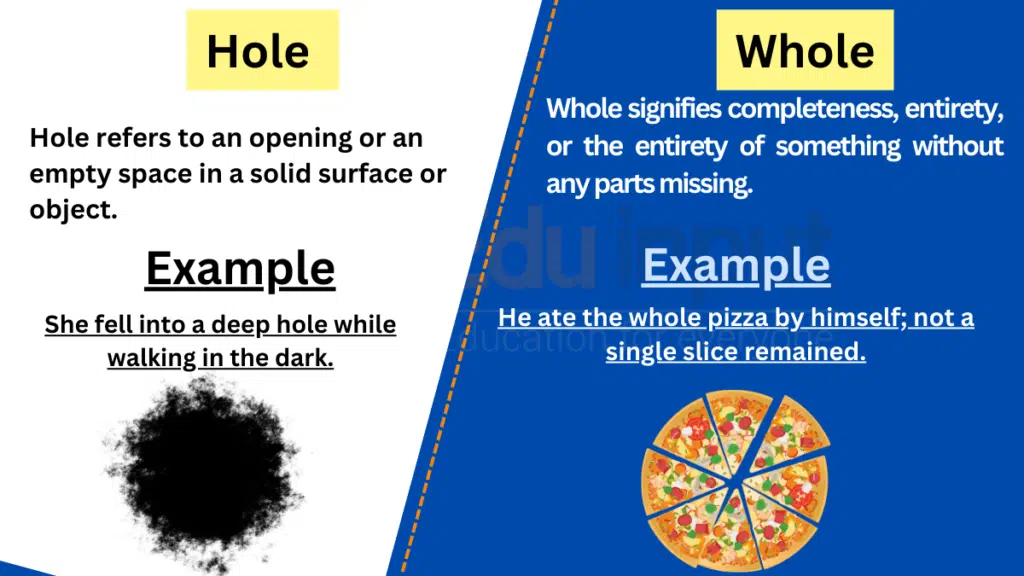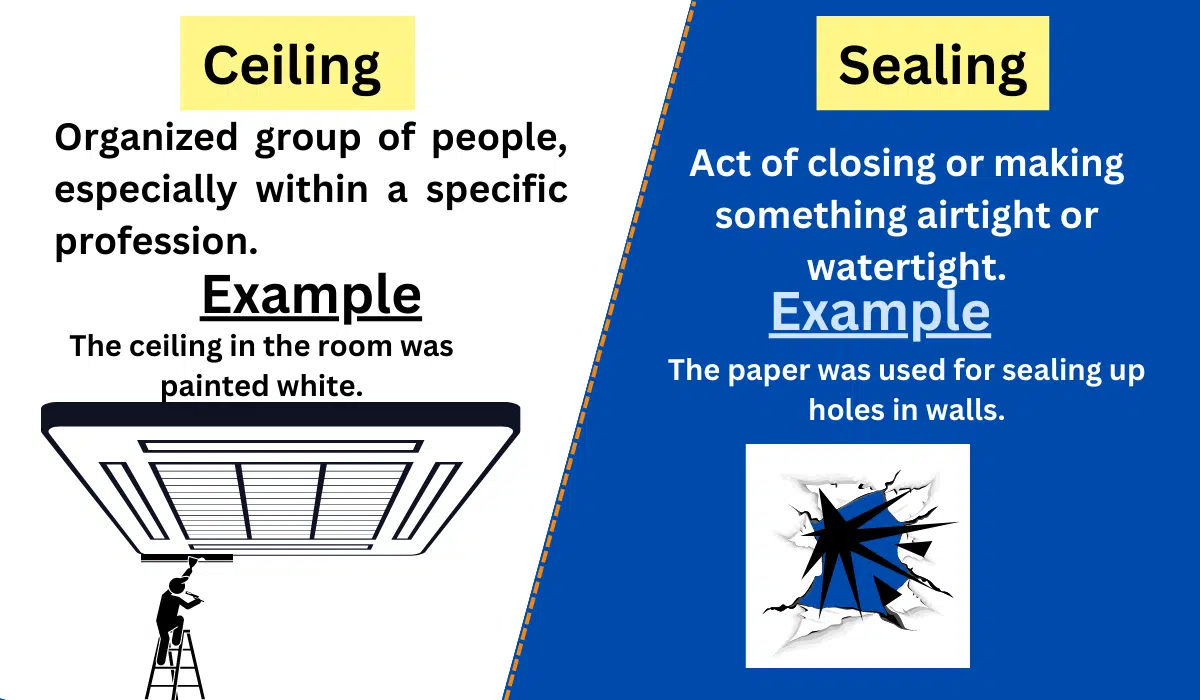Hole vs. Whole-Difference between and Examples
In the vast landscape of the English language, there are words that sound alike but have distinct meanings, leading to confusion and miscommunication. “Hole” and “whole” are two such words that often perplex language learners. This article will delve into the differences between “hole” and “whole,” exploring their definitions, usage, and contextual nuances. By unraveling the disparities between these words, we can enhance our language skills and express ourselves more precisely. Join us on this linguistic journey as we uncover the contrasting meanings of “hole” and “whole.”

Meanings and Examples
Hole meaning
Hole refers to an opening or an empty space in a solid surface or object.
Hole Examples
a) She fell into a deep hole while walking in the dark.
b) The carpenter used a drill to create a hole in the wooden plank.
c) There’s a hole in my sock; I need to mend it.
Whole meaning
Whole signifies completeness, entirety, or the entirety of something without any parts missing.
Whole Examples
a) He ate the whole pizza by himself; not a single slice remained.
b) The whole class went on a field trip to the museum.
c) She gave her wholehearted support to the cause.
Difference between Hole and Whole
| Hole | Whole | |
| Meaning | Opening or empty space in a solid surface/object | Completeness or entirety of something |
| Example | “She fell into a deep hole while walking.” | “He ate the whole pizza by himself.” |
| Usage | Describing an opening or empty space | Referring to the completeness or entirety of something |
| Context | Cavities, gaps, missing parts | Wholeness, entirety, entirety without omissions |
Usage in a Paragraph
Imagine walking through a dense forest when suddenly you accidentally step into a deep hole hidden beneath a thick layer of leaves. Your foot plunges into the unexpected void, causing you to lose your balance and fall. As you struggle to climb out of the hole, you realize the importance of watching your steps and being cautious of unseen dangers lurking beneath the surface.
Now, consider a scenario where you sit down to enjoy a delicious, piping-hot pizza. The aroma fills the room as you savor each mouthwatering bite. Before you know it, you’ve devoured the entire pizza, leaving not a single slice behind. The satisfaction of consuming the whole pizza, and experiencing all its flavors and textures, brings a sense of fulfillment and completeness.
By grasping the distinctions between “hole” and “whole,” we can communicate more effectively, ensuring that our words accurately convey the intended meaning. “Hole” pertains to openings or empty spaces in solid surfaces or objects, often associated with cavities or gaps. On the other hand, “whole” refers to completeness or entirety, emphasizing the absence of missing parts. By using these words appropriately, we can depict physical openings or emphasize the concept of entirety and wholeness. Let us harness the power of language to express the presence of openings or the essence of completeness in our communication.







Leave a Reply